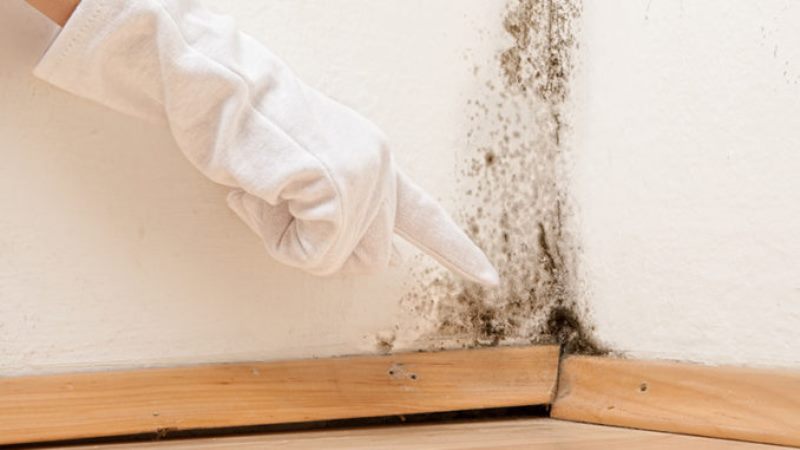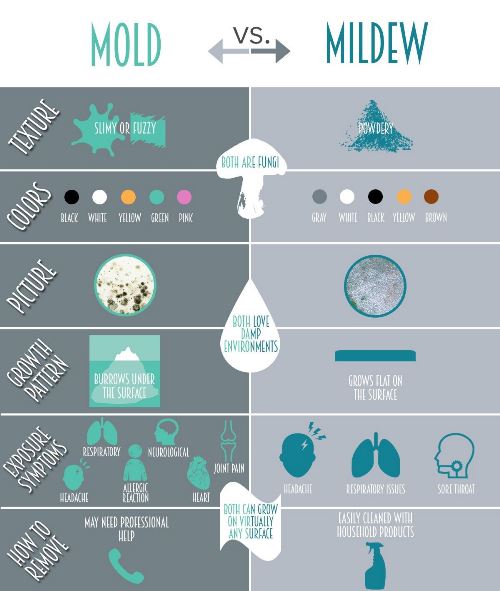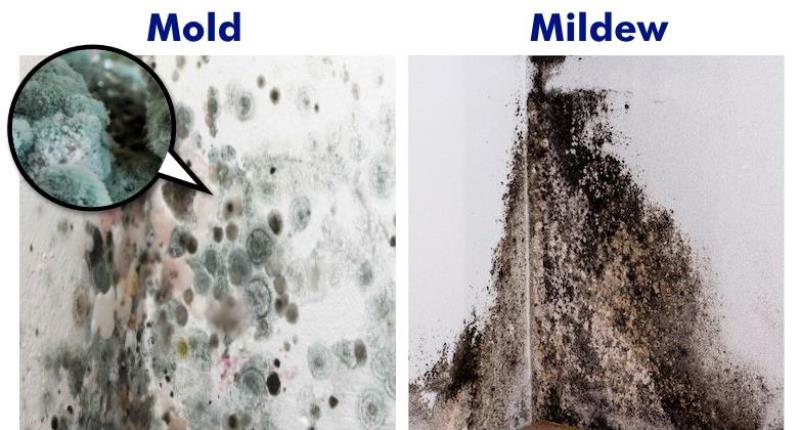Mildew and mould are both fungi, but mildew is not as invasive or troublesome. Mildew is a surface fungus that can be easily treated with a store-bought cleaner or bleach and a scrubbing brush. Mould is often a part of a larger infestation that may require professional treatment –Υδραυλικοί Αθήνας . Rather than growing on the surface of its host, mould penetrates the object it lives on and eats away at its cellular integrity.
These fungi also differ in appearance, and potential health risks. Mildew is typically a grey, white, or light brown colour and rests on the surface of a moist area. It has a powdery appearance and may be accompanied by a foul odour. Mould is usually black or green and has a fuzzy appearance and a distinctly musty smell.
While mildew can cause minor respiratory problems, enjoy coughing fits, it poses less of a threat than mould. A significant mould infestation can cause a host of issues that range in seriousness based on the health of the individual it comes into contact with. According to the CDC, persons in good health may experience sneezing, dry skin, nasal stuffiness, and itchy throat, whereas those with severe mould allergies, asthma, chronic lung illnesses, and other serious health issues may experience chest tightness, shortness of breath, and lung infections.

What causes mould and mildew?
Both mould and mildew need porous, the organic material to grow such as wood, insulation, carpet, food, upholstery, clothing, or paper. They thrive in humid conditions where a light source is poor or non-existent, and their growth occurs when their spores make their way into an area that’s suitable for colonies.
These spores exist relatively harmlessly in just about every breath we take, but the drama begins indoors when they encounter the trifecta of moisture, heat, and darkness, which encourages the spores to attach and multiply.
Where mould and mildew form?
Mould and mildew have preferences regarding where they like to take up residence. Mould is the most common type of fungus found on food; you can probably recall a time when, to your dismay, you discovered it on bread, meat, or cheese. Basements are also highly prone to mould after an event enjoy flooding, but they can grow under “normal” conditions, too.
This fungus isn’t picky and will take root just about anywhere that oxygen, warmth, darkness, and moisture come together. Common growth spots include fireplaces and chimneys, walls, furniture, insulation, mattresses, and crawl spaces.
Mildew is a thin, surface fungus that doesn’t penetrate its host. It’s most commonly found on floors, walls, ceilings, and areas with humidity, like bathrooms, kitchens, and basements. It’s common to see mildew in the corners of a shower or in a bathtub, but we can also find it on porous items that are left wet for too long like fabric, paper, and leather.
Effects of mould and mildew.
Mould and mildew spores typically can’t be seen by the naked eye until they’ve multiplied into a colony with millions of spores. In small colonies, neither mildew nor mould is a serious problem when taken care of quickly. Mildew is the least threatening of the two because it grows only on surfaces and can be easily remedied with a household cleaner, but it can cause minor respiratory issues if left untreated.
Mould is a different story. Not only is it slimy and unsightly, but it can also cause serious structural damage. As a predecessor to wood rot, mouldy hardwood floors can warp and buckle. When trapped underneath the flooring, mould can escape into the house and ruin furniture, carpets, and other areas once the foundation is exposed.
Homes with serious infestations may require the replacement of walls or entire roofs. Mould growing in the basement often goes unnoticed for months or years and can spread up into other rooms.
Not to mention, toxic black mould can cause serious reactions upon mould exposure. This type secretes chemicals known as mycotoxins, which wage gorilla warfare against your body, slowly entering through your skin, nose, and mouth, and lodging in your lungs, stomach, and other areas. In extreme cases, it can cause memory loss, hearing damage, and cognitive failure.
Signs of mould and mildew in your home.
Mildew can typically be detected via sight. You’ll know mildew by its powdery appearance and white or grey colour. Mould can be more difficult to detect because it grows on food and more permanent structures, including the interior of those structures.
If you’re unsure whether you’re looking at mould or mildew, an easy way to distinguish between the two is to place a few drops of bleach on the affected area. After five minutes, check the spot for any differences. If the area is lighter, you’re likely dealing with mildew, but if the spot is still dark, it’s probably mould.
Another way to determine mould is to purchase an at-home test kit. These kits are sold in stores or online and use Petri dishes to capture mould scores. After the petri dish has been exposed to the home’s air for several days, it’s returned to the manufacturer who reports back to you whether the mould is present. While these kits are helpful for preliminary screening, they won’t help you locate the mould’s source.
Professionals have more advanced methods of testing, including air sampling, surface testing, and bulk testing. Air sampling tests the concentration of spores in the air. In surface testing, samples are gathered through swabbing or tape lifting and then examined in a laboratory.
Bulk testing is the most thorough of the three methods and involves collecting materials from throughout your home and inspecting them in a lab for mould. The benefit of bulk testing is that you’ll be able to pinpoint the areas with the highest concentrations.
How to remediate mould and mildew?
If you’re dealing with mildew, the remediation process is simple.
- Materials
- Rubber gloves.
- Bleach or a household cleaner?
- Disposable toothbrush or rag.
- Water

How to remove mildew?
- Using rubber gloves, treat the area with bleach or a household cleaner.
- After, scrub with a disposable toothbrush or rag until the mildew is gone.
- Mildew on clothing can be removed by using a toothbrush and a cleaning solution to scrub the infected area and then wash the item by itself in hot water.
How to remove mould?
Mould comes whether to go at it alone or hire a professional. If you find mould in your home in small concentrations on easy-to-clean surfaces like windows, tubs, tiles, and sinks, it will usually succumb to a bleach and water solution.
How to prevent mould and mildew?
The primary way to prevent mould and mildew in your home is to eliminate moisture and maintain a good standard of housekeeping. As in any battle, it’s best to invest in prevention upfront instead of scrambling to remediate mould and mildew when they’re at your door, in your shower, or on your window.
- Keep bathrooms well-ventilated—Use an exhaust fan while showering to circulate air and remove moisture. Spread towels after use to encourage drying, wipe down showers and bathtubs at least once a week, and shore up any leaks. Be sure to keep up with routine maintenance with a septic warranty or sewer line warranty.
- Use dehumidifiers, fans, and open windows—These can encourage moisture reduction in other rooms. Moisture meters can detect the presence of moisture in ceilings, floors, and walls.
- Monitor your HVAC unit—If you have leaky air conditioning duct joints, especially in the attic, seal them with a mastic-type sealant.
- Regular cleaning—Clean windows often to prevent moisture, dust, and debris from collecting. You should also deep your entire home at least twice a year.
- Avoid bringing outdoor furniture indoors—Outdoor furniture brought inside is a hot spot for fungus, as is firewood.
- Keep mould off household plants—Moist soil and leaves are an ideal breeding ground for mould. Try adding the tea to the water you give your indoor plants, as this tree oil helps them withstand fungi.
- Beware of exterior issues—These include separating roof shingles, cracked or loose door and window frames, cracked chimney masonry, and deteriorating sundeck flashing, all inroads for mould. Clean gutters regularly and ensure downspouts carry water away from the foundation. You should also ensure that your roof is in top condition with a roof home warranty.
See more about plumbers:
- ΥΔΡΑΥΛΙΚΟΙ ΙΛΙΟΝ ΥΔΡΑΥΛΙΚΟΣ 24 ΩΡΕΣ
- ΥΔΡΑΥΛΙΚΟΙ ΙΛΙΣΙΑ ΥΔΡΑΥΛΙΚΟΣ ΥΔΡΑΥΛΙΚΕΣ ΕΡΓΑΣΙΕΣ ΒΛΑΒΕΣ
- ΥΔΡΑΥΛΙΚΟΙ ΚΑΒΟΥΡΙ ΥΔΡΑΥΛΙΚΟΣ 24 ΩΡΕΣ
- ΥΔΡΑΥΛΙΚΟΙ ΚΑΙΣΑΡΙΑΝΗ ΥΔΡΑΥΛΙΚΟΣ 24 ΩΡΕΣ
- ΥΔΡΑΥΛΙΚΟΙ ΚΑΛΑΜΑΡΙΑ ΥΔΡΑΥΛΙΚΟΣ
- ΥΔΡΑΥΛΙΚΟΙ ΚΑΛΛΙΘΕΑ ΥΔΡΑΥΛΙΚΟΣ 24 ΩΡΕΣ
- ΥΔΡΑΥΛΙΚΟΙ ΚΑΛΟΓΡΕΖΑ ΥΔΡΑΥΛΙΚΟΣ ΥΔΡΑΥΛΙΚΕΣ ΕΡΓΑΣΙΕΣ ΒΛΑΒΕΣ
- ΥΔΡΑΥΛΙΚΟΙ ΚΑΛΟΧΩΡΙ ΘΕΣΣΑΛΟΝΙΚΗ ΥΔΡΑΥΛΙΚΟΣ
- ΥΔΡΑΥΛΙΚΟΙ ΚΑΜΙΝΙΑ ΥΔΡΑΥΛΙΚΟΣ ΥΔΡΑΥΛΙΚΕΣ ΕΡΓΑΣΙΕΣ ΒΛΑΒΕΣ
- ΥΔΡΑΥΛΙΚΟΙ ΚΑΝΤΖΑ ΥΔΡΑΥΛΙΚΟΣ ΥΔΡΑΥΛΙΚΕΣ ΕΡΓΑΣΙΕΣ ΒΛΑΒΕΣ
